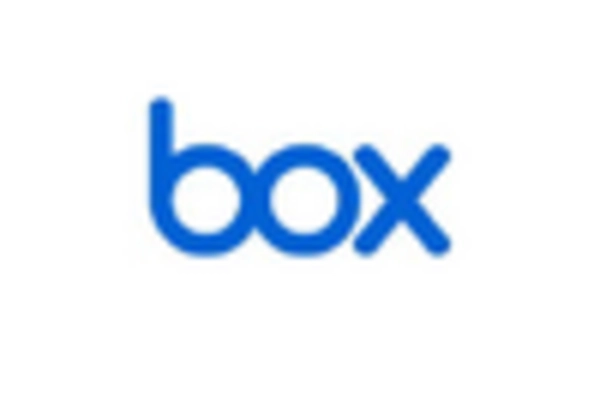Increased Data Generation
The exponential growth of data generated by individuals and businesses in South America is a notable driver for the personal cloud-storage market. With the rise of digital content creation, social media usage, and online transactions, the volume of data produced is staggering. It is estimated that data generation in the region has increased by over 30% annually. This surge necessitates efficient storage solutions, prompting consumers to seek personal cloud-storage options that offer scalability and flexibility. As users accumulate more data, the demand for secure and accessible storage solutions becomes paramount. The personal cloud-storage market is thus positioned to benefit from this trend, as individuals look for reliable ways to manage their growing data needs while ensuring easy access and security.
Growing Internet Penetration
The increasing availability and accessibility of high-speed internet in South America appears to be a crucial driver for the personal cloud-storage market. As more households gain internet access, the demand for cloud services is likely to rise. Reports indicate that internet penetration in the region has reached approximately 75%, which facilitates the adoption of cloud solutions. This trend suggests that consumers are more inclined to utilize personal cloud-storage services for their data needs, as they can easily upload and access files from anywhere. Furthermore, the proliferation of mobile devices enhances this trend, as users seek seamless integration between their devices and cloud services. Consequently, the personal cloud-storage market is expected to experience significant growth as internet connectivity continues to improve across South America.
Rising Awareness of Data Privacy
In South America, there is a growing awareness among consumers regarding data privacy and security, which significantly influences the personal cloud-storage market. As individuals become more informed about the risks associated with data breaches and unauthorized access, they are increasingly seeking cloud solutions that prioritize security. This trend is reflected in the market, where services that offer robust encryption and compliance with local regulations are gaining traction. Surveys indicate that approximately 65% of users consider data security a critical factor when choosing a cloud-storage provider. Consequently, the personal cloud-storage market is likely to see a shift towards providers that emphasize privacy features, thereby enhancing consumer trust and driving market growth.
Adoption of Remote Work Practices
The shift towards remote work practices in South America has emerged as a significant driver for the personal cloud-storage market. As businesses adapt to flexible work arrangements, employees require reliable access to files and documents from various locations. This necessity has led to an increased reliance on cloud-storage solutions, which facilitate collaboration and file sharing among remote teams. Data suggests that around 40% of companies in the region have adopted hybrid work models, further fueling the demand for personal cloud-storage services. The personal cloud-storage market is thus likely to expand as organizations and individuals seek efficient ways to manage their work-related data in a remote environment, ensuring productivity and connectivity.
Emergence of Affordable Cloud Solutions
The introduction of affordable cloud-storage solutions in South America is a pivotal driver for the personal cloud-storage market. As competition among service providers intensifies, prices for cloud services have become more accessible to a broader audience. This trend is particularly beneficial for small businesses and individual users who may have previously found cloud solutions financially prohibitive. Current market analysis indicates that the average cost of personal cloud-storage services has decreased by approximately 20% over the past two years. This reduction in pricing, coupled with enhanced features and user-friendly interfaces, is likely to attract more consumers to the personal cloud-storage market, fostering greater adoption and usage across diverse demographics.


















Leave a Comment